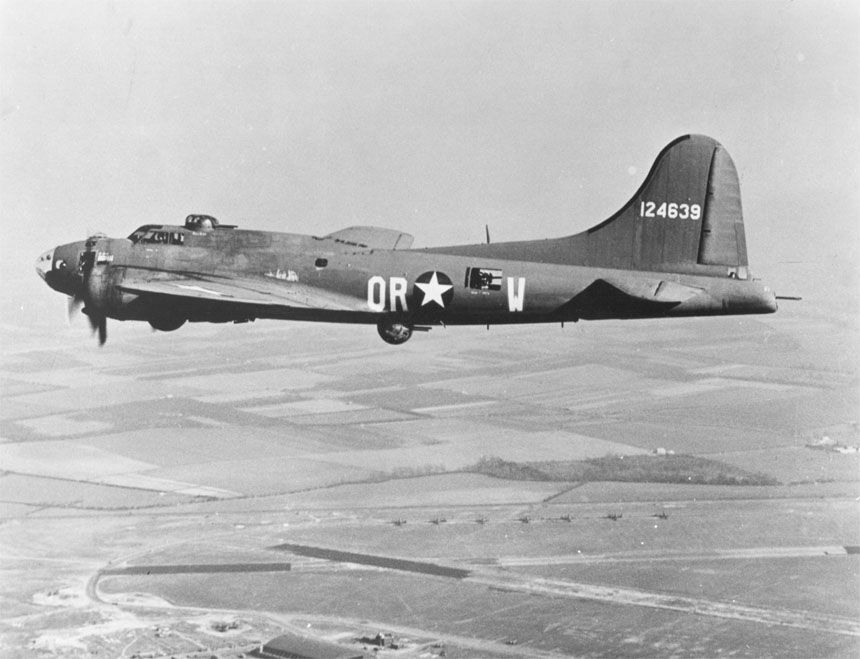The following article on the Combined Bomber Offensive is an excerpt from Barrett Tillman’ D-Day Encyclopedia. It is available for order now from Amazon and Barnes & Noble.
Arising from the Casablanca Conference of January 1943, the Combined Bomber Offensive (CBO) was a joint Anglo-American plan to destroy or cripple German transport and industry by day and night bombing. Among its chief architects was Maj. Gen. Ira C. Eaker, who would lead the U.S. Eighth Air Force until January 1944.
The Combined Bomber Offensive was more a policy than a plan, as it contained few specifics beyond the provision for the Royal Air Force to continue night operations while the Americans flew by day. A target list was drafted, with priorities that would change throughout the war. However, as a rule, the CBO was to attack German submarine yards and bases, the fighter aircraft industry, transportation systems, and ball bearing and petroleum production. Unaccountably, Germany’s electrical grid was almost wholly overlooked; it was especially vulnerable, because it was not readily dispersed or moved underground.
At the heart of the offensive was the American belief in precision daylight bombing conducted by unescorted aircraft such as the Boeing B-17 and Consolidated B-24. Eaker envisioned a fleet of a few hundred bombers as sufficient to accomplish the goal while keeping losses within the allowable 4 percent. British air leaders such as Sir Charles Portal and Bomber Command’s Sir Arthur Harris doubted that operations would confirm American optimism about daylight bombardment and preferred that Eaker’s force join the RAF night campaign. Nevertheless, in the interest of Allied unity they posed no serious objections and awaited events.
As the RAF expected, the hard reality of the Luftwaffe fighter arm forced a reassessment later that year, and the Combined Bomber Offensive was saved only by timely arrival of long-range American fighters in late 1943.
In early 1944 the Eighth Air Force was frequently targeted against enemy transport in France and Germany, seeking to impede the inevitable German response to D-Day. Strategic planners sometimes voiced objections, insisting that the heavy bombers should continue attacking German industry while the tactical air forces supported Overlord. In the end, the weight of Allied airpower ensured that both objectives were met, though probably not as efficiently as possible.
This article is from the book D-Day Encyclopedia, © 2014 by Barrett Tillman. Please use this data for any reference citations. To order this book, please visit its online sales page at Amazon or Barnes & Noble.
You can also buy the book by clicking on the buttons to the left.
This article is part of our larger resource on the WW2 weapons development. Click here for our comprehensive article on the WW2 weapons.
Cite This Article
"Combined Bomber Offensive: Crippling Germany with Non-Stop Bombing" History on the Net© 2000-2024, Salem Media.
July 26, 2024 <https://www.historyonthenet.com/combined-bomber-offensive>
More Citation Information.
